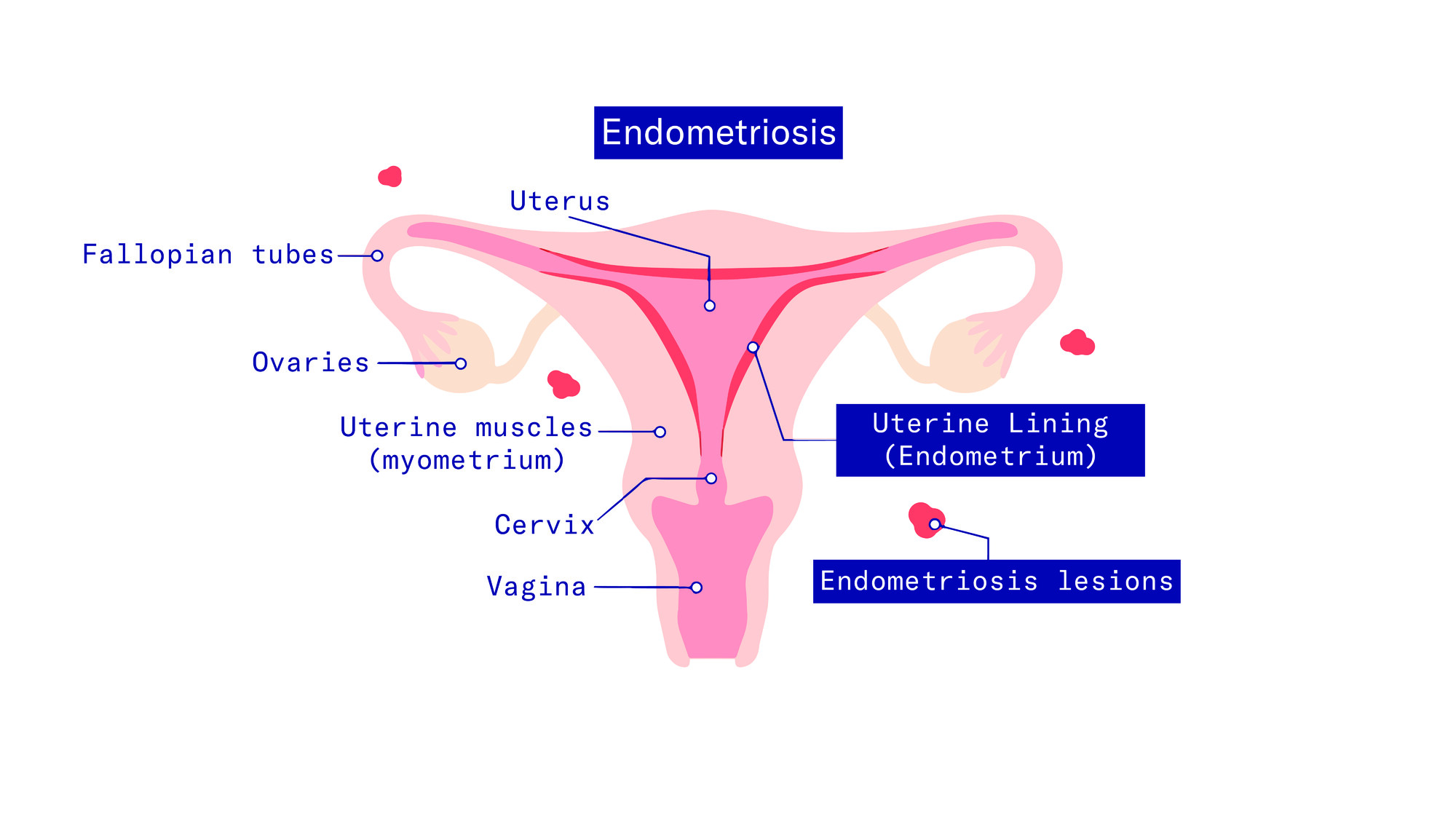1. What exactly is diabetes?
Diabetes mellitus – more commonly referred to as diabetes (or sometimes “sugar diabetes”) – is a chronic metabolic disorder characterized by impaired control of blood sugar levels. It is occasionally referred to as “sugar diabetes” because of its association with high blood sugar. But not all diabetes is the same: In fact, there are a number of different types with completely different causes and treatments [1].
In all types of diabetes, however, information and education play an important role since poor blood sugar control can have serious short and long-term consequences for those affected. But with a good understanding of the disease, an active lifestyle, and modern treatment options, the course and prognosis can be greatly improved [2].
2. Classification and causes
2.1. Type 1 diabetes
In type 1 diabetes mellitus, the body doesn’t produce insulin, or produces very little insulin. Insulin is a hormone that plays a critical role in lowering the level of sugar (glucose) in the blood. If the body doesn’t produce enough insulin, this leads to high or uncontrolled blood sugar levels [1].
Type 1 diabetes is caused by an autoimmune reaction, in which a person’s immune system attacks certain structures of their own body. The autoimmune response in type 1 diabetes is directed against the insulin-secreting beta cells in the pancreas, with symptoms developing after around 80% of the beta cells have been destroyed [3].
Although diabetes frequently starts in childhood, it can also develop in previously healthy adults [4]. Equally, the number of children being diagnosed with type 2 diabetes mellitus is also on the increase [2].

2.2. Type 2 diabetes
Type 2 diabetes mellitus is a metabolic disorder characterized by disturbances in blood sugar regulation. Among other things, the pancreas doesn’t secrete enough insulin and the muscle cells don’t respond normally to insulin (insulin resistance). Normally, insulin promotes the uptake of glucose from the blood into the cells. In insulin resistance, the cells are unable to absorb glucose normally from the blood despite the presence of insulin and the blood sugar level rises as a result. Both insulin resistance and inadequate insulin secretion result in high or uncontrolled blood sugar levels [6, 7].
Type 2 diabetes is caused by a combination of genetic and lifestyle risk factors. An individual’s risk of developing the disease is not influenced by a single gene, but by a large number of genes. The major risk factors for type 2 diabetes mellitus are the following [8, 9]:
- Increasing age (which is why the disease used to be called “adult-onset diabetes”)
- Being overweight – abdominal obesity and increased waist circumference are particularly relevant
- Family history of type 2 diabetes in a first-degree relative
- Ethnic group – people with African American, Latin American, or Asian ancestry, among others
- High blood pressure or dyslipidemia (abnormal blood fat levels)
- Polycystic ovarian syndrome
2.3. Other types of diabetes: type 3 diabetes
A number of other types of diabetes exist that are neither type 1 nor type 2. This group is usually referred to as “other specified types of diabetes” or “type 3” diabetes. However, since the group includes many different types of diabetes with fundamentally different causes and treatments, the term “type 3 diabetes” can be misleading [10].
It includes certain genetic defects, other diseases of the pancreas, and other endocrine disorders with abnormalities of cortisol or growth hormone secretion [11].
2.4. Diabetes of pregnancy
Diabetes of pregnancy, or gestational diabetes mellitus (GDM), is a special form of diabetes in which impaired blood sugar regulation develops for the first time during pregnancy [12]. It has similar risk factors to type 2 diabetes mellitus (see above) [13].
Gestational diabetes usually disappears immediately after giving birth. However, women who have had gestational diabetes are at increased risk of both type 2 diabetes and gestational diabetes in further pregnancies [14].
Note that if diabetes mellitus already existed before the pregnancy, it is not referred to as diabetes of pregnancy or gestational diabetes. A pregnancy complicated by diabetes is automatically treated as a high-risk pregnancy that requires the involvement of specialists [12].
2.5. Diabetes insipidus: a completely different disease
Contrary to what the name suggests, diabetes insipidus is a completely different disease that has nothing to do with blood sugar levels and is not related to other types of diabetes [15].
Instead, it is related to antidiuretic hormone (ADH). When the condition is caused by a lack of ADH, it is called central diabetes insipidus. When it is caused by a failure of the kidneys to respond to ADH, it is called nephrogenic diabetes insipidus. People with this disease pass large volumes of urine constantly, even at night [16].
3. Symptoms
3.1. Symptoms of type 1 diabetes
Type 1 diabetes mellitus can have a number of different signs and symptoms, which occur as a result of a significantly increased blood sugar level due to insufficient insulin production (see 2.1.). The symptoms often appear for the first time at a young age following a viral infection, which suggests that the virus may trigger an overreaction of the immune system [1].
The most common signs and symptoms of type 1 diabetes mellitus include [17, 18]:
- Frequent urination
- Increased thirst
- Extreme hunger
- Tiredness, fatigue, or general weakness
- Nausea
- Blurred vision
One of the effects of the extremely high blood sugar level is increased excretion by the kidneys, which results in frequent urination and increased thirst. The lack of insulin triggers metabolic processes in the body that tend to break down molecules, which can promote a feeling of weakness. High blood sugar can cause the lens inside the eye to swell, which results in blurred vision [17].
The initial onset of type 1 diabetes mellitus can be very abrupt and may even lead to a diabetic coma. As well as the symptoms mentioned above, there may be impairment of consciousness, abdominal pain, vomiting, foul-smelling breath, or deep breathing [19].
As the disease progresses, additional symptoms may occur, such as [17, 18, 20]:
- Muscle weakness and cramps
- Itching
- Weight loss despite normal or increased appetite
- Persistent gastrointestinal symptoms
- Susceptibility to infection
- Fungal skin infections
However, these and other consequences of the disease (see 6.1) depend largely on how well the disease is treated following diagnosis [17].
3.2. Symptoms of type 2 diabetes
The symptoms of type 2 diabetes often develop much more insidiously than the symptoms of type 1 disease. In addition, it is mainly older people who are affected. In many cases, the disease is only discovered late and then only by chance during a visit to the family doctor. Also, unlike type 1 diabetes, the physical signs at the onset of the disease may initially be due to low blood sugar levels. In the early stages of the disease, disordered insulin metabolism rather than an absolute deficiency of insulin often predominates (see 2.2.) [21].
The most common signs and symptoms of type 2 diabetes mellitus include [20, 22]:
- Frequent urination
- Increased thirst
- Extreme hunger
- Weight loss despite normal or increased appetite
- Sensory alterations such as itching or burning in the legs
- Fungal skin infections
- Fatigue or reduced mental and physical capacity
- Leg cramps
- Blurred vision
However, symptoms can go unnoticed for a long time or, in mild disease, may be completely absent at first. Depending on how long the disease has been present and how well it is treated, it can also have many other consequences (see 6.2.) [22].

4. Diagnosis
The diagnosis of diabetes mellitus is made by a doctor and requires a laboratory test. Even if highly characteristic symptoms are present (see 3) that raise a strong suspicion of diabetes mellitus, an abnormal test result is still required to make a firm diagnosis [23, 24, 25].
A diagnosis of diabetes requires one of the following for verification [11, 23]:
- Elevated fasting blood sugar level. The blood sugar level is elevated after eight hours without food or drink.
- Elevated HbA1c (glycated hemoglobin) level. This is a laboratory marker that provides information about the blood sugar level over the last one to three months.
- Elevated two-hour value in the oral glucose tolerance test. This is a test for unclear cases in which the person has to drink a glucose solution and the rise in blood sugar is determined two hours later.
However, depending on the country, available diagnostic options, and other aspects of the person’s health status, the extent of testing may vary. Further investigations may also be required for different types of diabetes [23].
Further investigations for diabetes may include the following [23, 24, 25, 26]:
- Examination of the urine. Albumin is a protein that can be determined in urine. The amount of albumin allows conclusions to be drawn about complications of diabetes such as kidney damage (see 7).
- Renal function tests. Markers such as creatinine and the glomerular filtration rate (GFR) can be determined in the blood and can indicate reduced kidney function in advanced disease.
- Lipid profile. Changes in the levels of blood lipids (blood fats) can be present both at the onset of type 1 diabetes and in patients with type 2 diabetes and chronic dyslipidemia.
- Genetic testing. If there is no type 1 or type 2 diabetes but a specific genetic defect is suspected (see 2.3), targeted analysis of individual genes can be useful.
- Antibody tests. If it is not clear whether type 1 or type 2 diabetes is present, it can be useful to determine specific antibodies (usually GAD antibodies and IA2 antibodies).
- C-peptide test. The C-peptide is a component of an insulin precursor that is later split off. Because an absolute deficiency of insulin occurs in type 1 diabetes, the level of C-peptide is also reduced.
It is important to correctly distinguish between type 1 and type 2 diabetes mellitus in children, since increasing numbers of children are being diagnosed with type 2 diabetes nowadays and the treatment of each type is different (see 5) [24].
5. Treatment
5.1 Type 1 and type 2 diabetes: differences in treatment
There are significant differences between the treatment of type 1 and type 2 diabetes. Because people with type 1 diabetes do not produce enough insulin of their own (see 2.1), they always require treatment with insulin. In type 2 diabetes, however, insulin therapy is only required for advanced stages of disease if other approaches haven’t worked [27].
Because an individual’s lifestyle has such a major influence on the onset and progression of the disease, lifestyle modifications with a focus on diet and exercise are very important for people with type 2 diabetes. There are also a number of medications – known as oral antidiabetics or oral antihyperglycemics – which can be used in type 2 as opposed to type 1 diabetes [27].
5.2. Treatment of type 1 diabetes
People with type 1 diabetes mellitus require lifelong insulin replacement therapy. In some patients, the onset of symptoms is followed by a period in which they require little or no insulin. Ultimately, however, they will require daily insulin therapy [28, 29, 30].
There are numerous insulin regimens and types, which offer different benefits for different people and are therefore used in different combinations. The duration of action of different types of insulin can vary significantly and can be suitable for achieving different goals [27, 28, 30].
Conventional insulin therapy is characterized by a relatively rigid regimen of injections with fixed morning and evening doses. Although this regimen is quite straightforward to implement, it requires a rigid meal schedule. This approach is not recommended for young patients and especially not for patients with type 1 diabetes.
In contrast, intensive insulin therapy involves injections of a long-acting insulin as well as shorter-acting insulin depending on meals, time of day, and blood sugar levels. The increased effort required for this approach is offset by more precise control of blood sugar (glycemic control) [27, 28, 29, 30].
An insulin pump that continuously delivers insulin into the subcutaneous fatty tissue is also a treatment option that should be discussed with a doctor [27, 28].
5.3. Treatment of type 2 diabetes
The treatment of type 2 diabetes mellitus usually involves a staged approach. In contrast to type 1 diabetes, insulin is only used in advanced stages of the disease. An active lifestyle with a balanced diet and plenty of exercise is very important during all stages of treatment [27, 31, 32, 33].
The staged approach to the treatment of type 2 diabetes comprises the following [27, 31, 32, 33]:
- Basic (non-pharmacological) management. These measures are aimed at modifying the lifestyle of affected persons and include weight reduction for overweight individuals, plenty of exercise, and a balanced diet.
- Monotherapy. In addition to basic management measures, an oral antidiabetic (oral antihyperglycemic) drug – usually metformin – is taken daily in tablet form.
- Combination therapy. This stage usually involves the use of metformin in combination with another oral antidiabetic drug or insulin.
- Intensive insulin therapy. A long-acting insulin is injected in combination with shorter-acting insulins depending on meals, time of day, and blood sugar levels.
Each treatment stage should be tried for at least three to six months and then evaluated by checking the level of HbA1c (glycated hemoglobin) in the blood (see 4). Only in the absence of a satisfactory improvement in blood sugar levels should the patient progress to the next stage [27, 31, 32].
It is important for everyone with diabetes to maintain the basic treatment measures even when they progress to more advanced stages. Ample physical activity not only lowers blood sugar levels effectively but has also been shown to enhance the effect of insulin [27, 31, 32, 34].
With regard to diet, there are a few basic foundations to consider. However, these are medically advisable for everyone, whether or not they have diabetes [27].
The foundations of a balanced diet for type 2 diabetes mellitus are as follows [27, 31]:
- The daily caloric intake should not exceed the daily requirements.
- About 50% of the diet should consist of carbohydrates, 25% of fats, and 20% of proteins.
- Short-chain (simple) sugars that are found in candy, soft drinks, and many convenience foods should be avoided.
- Industrially manufactured products should also be avoided, even if they are labeled as “diabetic” or “suitable for diabetics.”
- The diet should be rich in fiber, which is found in vegetables, oatmeal, and wholegrain bread, among other things.
- If alcohol is consumed, care should be taken to consume additional carbohydrates. This can prevent dangerously low blood sugar levels.
Ultimately, the precise measures should be taken in consultation with the treating doctor [27].

6. Typical course
6.1. Course of type 1 diabetes
The course and progression of type 1 diabetes mellitus depend largely on the motivation of the affected individual and the resulting quality of blood sugar control. With proper education about the disease and the best way to treat it, most people with type 1 diabetes can expect a good quality of life and a high life expectancy [35, 36, 37].
However, people with type 1 diabetes who neglect their treatment are likely to experience serious consequences (see 7) [35].
6.2. Course of type 2 diabetes
The course and progression of type 2 diabetes mellitus progresses depend largely on the behavior of the affected individuals. In addition to targeted adaptation of the pharmacological therapy to the current status of the disease, lifestyle factors play a crucial role. Achieving and maintaining a healthy weight, consuming a healthy diet, and taking plenty of exercise have a very positive impact on the course of the disease and can delay or even completely prevent serious consequences (see 7) [35, 38].
7. Consequences and complications
If inadequately treated, diabetes mellitus can have a number of consequences and complications. This is true for all types of diabetes.
The possible consequences and complications of diabetes mellitus include the following [39, 40, 41, 42]:
- Severe hyperglycemia, which can progress to hyperglycemic coma. If undetected or inadequately treated, diabetes can lead to extremely high blood sugar levels (hyperglycemia) or even coma with loss of consciousness.
- Life-threatening hypoglycemia. If insulin therapy is too high in relation to food intake, this can lead to extremely low blood sugar levels (hypoglycemia).
- Diabetic macroangiopathy. Prolonged elevation of blood sugar levels can damage the major blood vessels, leading to heart attack, stroke, or blockage of the leg arteries.
- Diabetic microangiopathy. Prolonged elevation of blood sugar levels can damage the small blood vessels, with harmful consequences for the kidneys, eyes, and nerves.
- Increased susceptibility to infections. Prolonged elevation of blood sugar levels can weaken the immune system, making affected individuals more susceptible to infections.
- Impaired wound healing. Prolonged elevation of blood sugar levels can impair the body’s ability to heal.
The contents of this article reflect the current scientific status at the time of publication and were written to the best of our knowledge. Nevertheless, the article does not replace medical advice and diagnosis. If you have any questions, consult your general practitioner.
Originally published on







